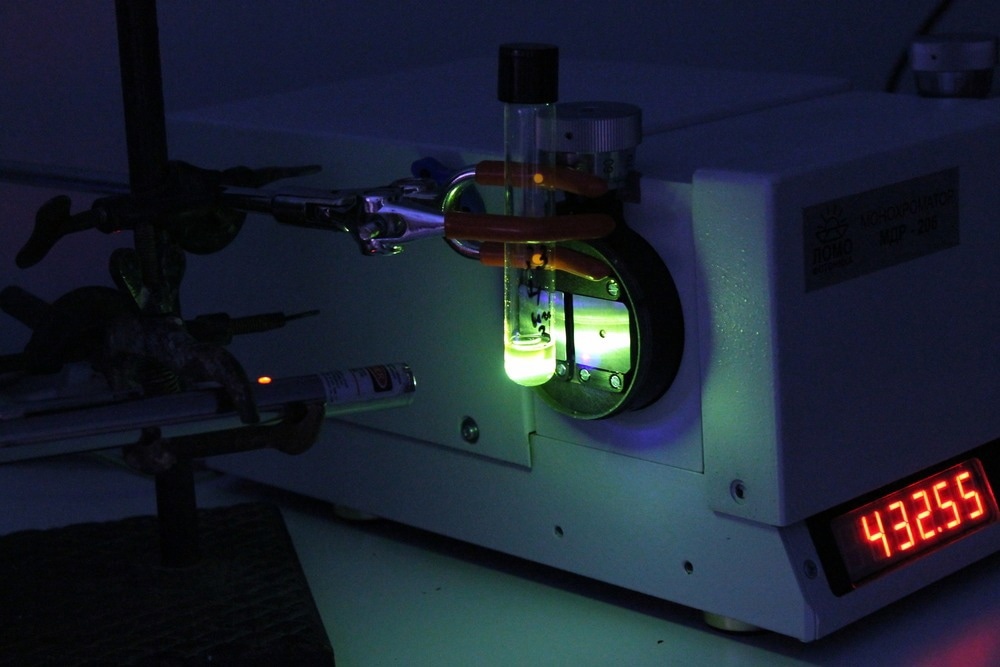A paper recently published in the journal Nature Communications demonstrated high conductivity and metallic behavior in two-dimensional (2D) superlattices of semiconductor colloidal quantum dots (CQDs) of lead sulfide.

Image Credit: Leo Matyushkin/Shutterstock.com
Importance of High Conductivity in Semiconductor CQDs
Semiconducting colloidal quantum dots (CQDs) and their assemblies have received significant attention from the scientific community and several industries as they display excellent optical properties due to the quantum confinement effect.
Semiconducting CQDs are used in different applications, including in solar cells to improve energy conversion efficiency, in quantum computing to manipulate and trap individual electrons, and as fluorescent probes and electronic displays in biological imaging.
However, realizing high electrical conductivity in semiconductor CQDs is a significant challenge due to the orientational disorder of QDs in assemblies, which is hindering the use of semiconductor QDs in several applications.
For instance, enabling metallic behavior in semiconducting CQDs can facilitate the fabrication of QD displays that consume less energy and are brighter compared to existing devices.
Assembling CQDs into coherent “single-crystal” superstructure solids with improved optoelectronic functionalities remains a major challenge in nanotechnology and nanoscience. However, these designer single-crystal CQD solids can revolutionize technological advancements in several fields.
For instance, quasi-2D giant superlattices formed by the monolayer CQD assembly can be established as artificial giant atoms. Giant superlattices, such as the moiré superlattices of twisted bilayer graphene, display several emerging physical properties, including topological states, strongly correlated insulators, and superconductivity.
Highly conductive QD assembly with bulk-like delocalized electronic wavefunctions and the well-preserved quantum confinement nature of the building blocks are crucial for the formation of a bottom-up solution-processable 2D giant superlattice from CQDs.
Such assemblies must possess an electronic miniband structure, which cannot be realized in disordered/sintered and annealed CQD assemblies. The miniband formation can improve the diffusion length and carrier mobility. Additionally, QD solids with improved electronic performance must be designed by retaining the unique properties of CQDs stemming from the quantum confinement effect.
Synthesis of 2D Superlattice of Semiconducting Lead Sulfide CQDs
Recent advancements in the heat transport, magnetism, upconversion, carrier multiplication, lasing, display, and luminescence properties of CQDs have necessitated efficient charge transport to realize true all-QD thermoelectric devices, highly-sensitive scintillators and detectors, electrically driven lasers, and direct electroluminescence devices.
Thus, the formation of a well-defined CQD assembly with a minimum energetic and spatial disorder is necessary to understand the fundamental properties of electronic states, which is crucial for future developments in device technology.
In this study, researchers synthesized a superlattice of lead sulfide semiconducting CQDs that demonstrate the electrical conducting properties of a metal. Researchers achieved precise facet orientation control to enable the formation of highly-ordered quasi-2D epitaxially-connected QD superlattices with high conductivity.
The superlattice assembly of lead sulfide QDs was prepared using the liquid/air interfacial method (LAA). High-quality lead sulfide QDs with different diameters were obtained after the customization of the synthesis protocol. Dimethyl sulfoxide, methanol, acetonitrile, 1,2-ethanedithiol, ethylenediamine, and 1-ethyl-3-methylimidazolium bis(trifluoro-methylsulfonyl)imide were procured as ionic liquid gates, subphases, and solvents.
Researchers combined the facet attachment control and the gradual selective ligand stripping process during the self-assembly on the liquid surface using chelating ethylenediamine as the chemical trigger to ensure QD facet attachment to form large-area 2D QD superlattices.
Ionic gating was employed to continuously dope the QD solids with high carrier density electrostatically to surpass the critical doping concentration required for insulator-to-metal transition (IMT) in the epitaxially-connected QD superlattices.
Electron diffraction and small-angle/wide-angle X-ray scattering (SAXS/WAXS) and electron microscopy were utilized to determine the formation of epitaxially-connected large-area QD superlattice.
Additionally, an electric double-layer transistor (EDLT) was used to evaluate the electronic properties of the epitaxially-connected lead sulfide QD superlattices. Large area 1,2-ethanedithiol (EDT)-bridged QD assemblies were also synthesized and used as controls.
Significance of the Study
The IMT was achieved successfully in the epitaxially connected QD superlattices of semiconducting compound/lead sulfide by tuning the carrier density through field-induced doping using ionic liquid gating.
Optimized attachment process through the step-by-step selective ligand stripping process ensured the formation of well-oriented large-area epitaxial assemblies. The attachment cross-section size, electronic coupling, and superlattice angle of the QD superlattices were controlled effectively, which minimized disorders in the system and promoted charge carrier delocalization.
The lead sulfide QD superlattices displayed an exceptionally higher conductivity compared to existing QD displays when researchers increased the carrier density using EDLT. The quantum confinement was maintained in the individual QDs, which indicates the realization of high conductivity without any loss of individual QD functionality.
Thus, the intrinsically high carrier mobility demonstrated the high potential of lead sulfide QDs for electrical conducting properties. The carrier delocalization in QD superlattices can facilitate further investigation of QD assemblies as designer materials and the development of new types of 2D giant superlattices formed using QD as giant atoms through the solution process.
To summarize, the findings of this study demonstrated that precise orientation control of QDs in the assembly can lead to metallic behavior and high electronic mobility.
References and Further Reading
Septianto, R. D., Miranti, R., Kikitsu, T., Hikima, T., Hashizume, D., Matsushita, N., Iwasa, Y., Bisri, S. Z. (2023). Enabling metallic behavior in two-dimensional superlattice of semiconductor colloidal quantum dots. Nature Communications, 14(1), 1-10. https://doi.org/10.1038/s41467-023-38216-y
RIKEN (2023) Forging a dream material with semiconductor quantum dots [Online] Available at https://phys.org/news/2023-05-forging-material-semiconductor-quantum-dots.html (Accessed on 31 May 2023)
Talapin, D. V., Klimov, V. I., Arakawa, Y., Bayer, M., Sargent, E. H. (2021). Semiconductor quantum dots: Technological progress and future challenges. Science. doi/10.1126/science.aaz8541
Disclaimer: The views expressed here are those of the author expressed in their private capacity and do not necessarily represent the views of AZoM.com Limited T/A AZoNetwork the owner and operator of this website. This disclaimer forms part of the Terms and conditions of use of this website.